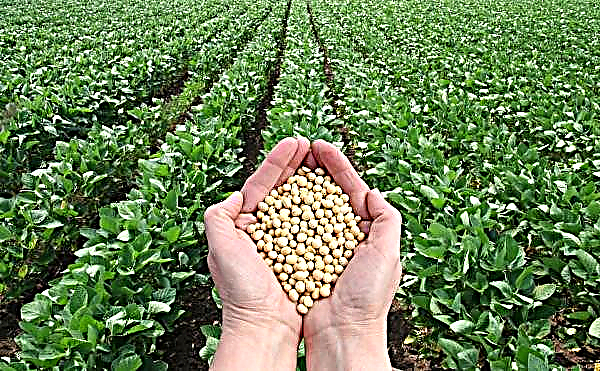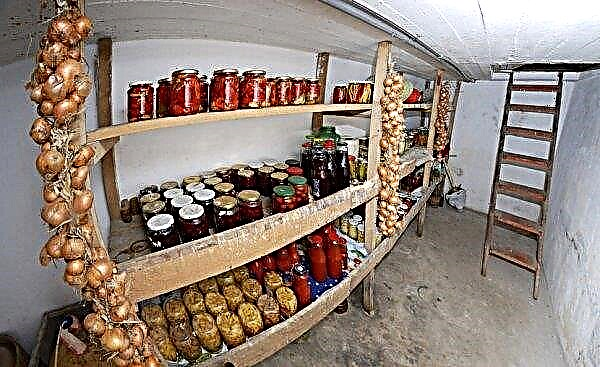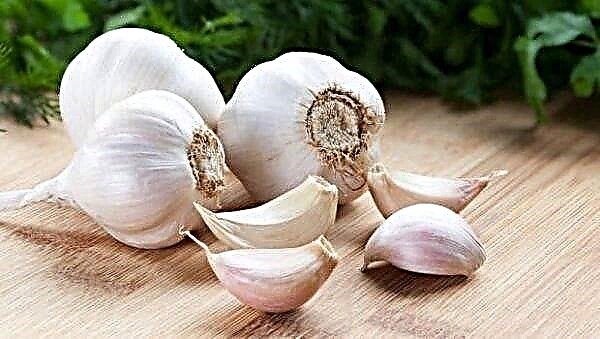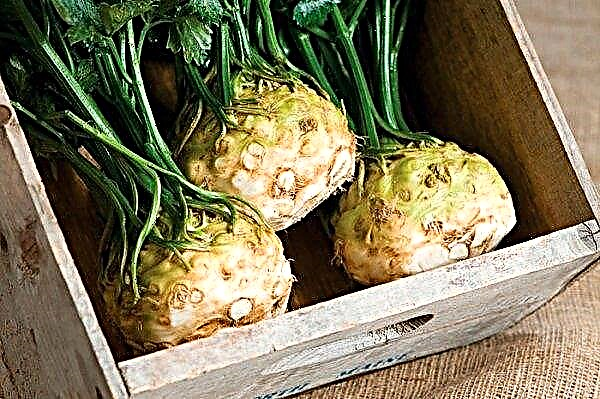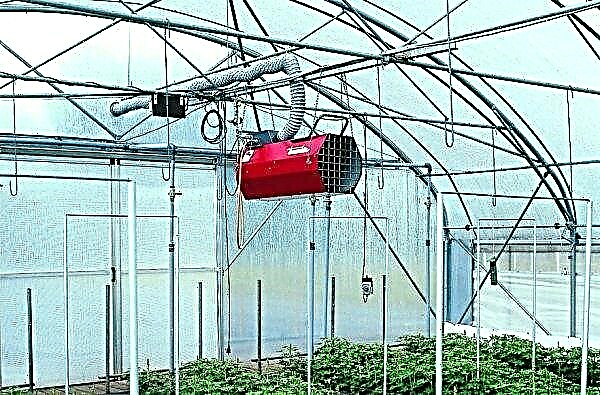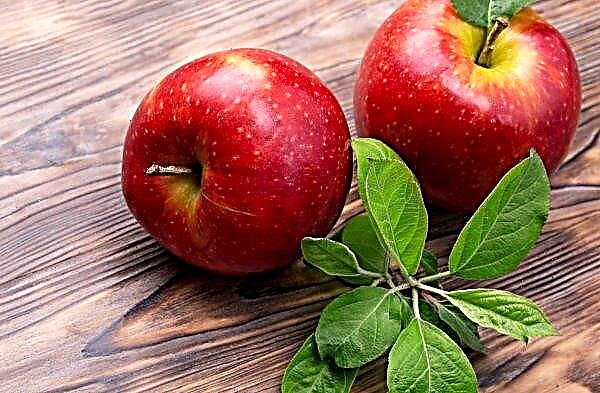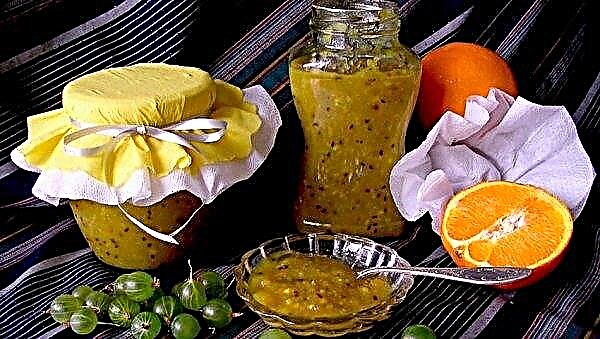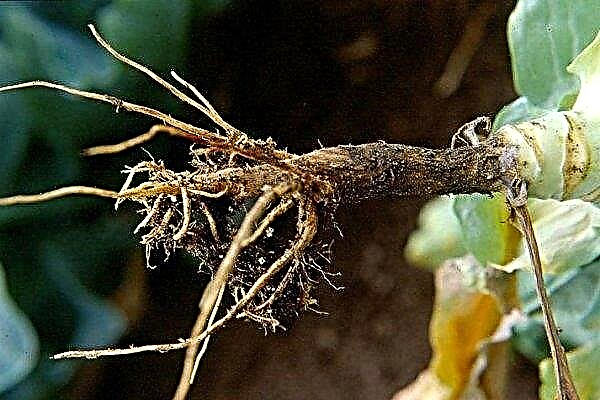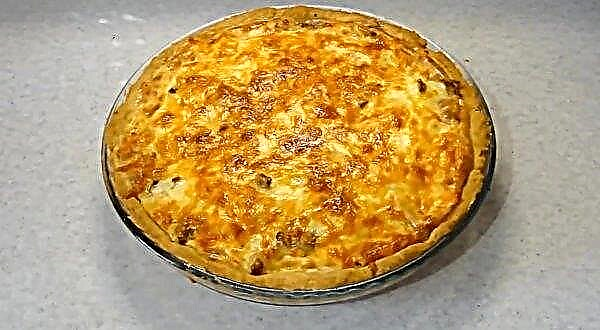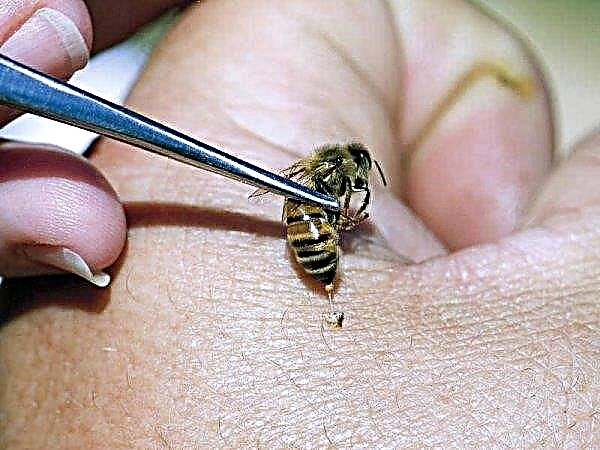One of the progressive potato varieties of German breeding of early ripening is Red Sonya. The variety is notable for a high degree of keeping quality, which is uncharacteristic for early potatoes, and is also highly resistant to viral diseases. Read more about the pros and cons of this variety, as well as the rules for its cultivation, read below.
Did you know? The potatoes were cultivated by Indians living in South America, from where it began to spread throughout Europe. In the homeland of this culture, you can still find wild varieties.
Characterization and description of the variety
The variety was bred by German breeders of EUROPLANT Pflanzenzucht GmbH about 11 years ago. In 2012, an application for admission was submitted, and already in 2015, the variety was introduced in the State Register of the Russian Federation and zoned in the Volga-Vyatka and North Caucasus regions. However, the variety has worked well in other regions. Early Sonya Red potatoes reach physical maturity in 50–65 days, which allows planting material to be planted 2 times a season in warm regions. Harvest reaches technical maturity on the 45th day. Productivity is 450 kg / ha. Despite the early ripening, the variety shows a good keeping quality, which is 96%. The variety is highly resistant to nematodes and viral diseases, medium resistant to scab and late blight, but unstable to rhizoctonia. It is undemanding to the composition of the soil, adapts well to different climate conditions.
Harvest reaches technical maturity on the 45th day. Productivity is 450 kg / ha. Despite the early ripening, the variety shows a good keeping quality, which is 96%. The variety is highly resistant to nematodes and viral diseases, medium resistant to scab and late blight, but unstable to rhizoctonia. It is undemanding to the composition of the soil, adapts well to different climate conditions.
Important! According to the instructions of the originator of the variety, nitrogen fertilizers must be introduced into the soil for planting this variety in minimal quantities.
Bushes are tall or medium, upright type. Leaves are medium-sized and large, light green. Corolla small, with a strong anthocyanin color inside. Each plant forms 6–10 tubers, the mass of which varies between 110–190 g. The surface of the oval aligned tubers is smooth, covered with a thin pink skin.
The tubers are resistant to mechanical damage. The pulp on the cut is yellow; under the influence of air and heat treatment it does not change color. It is characterized by high palatability. Belongs to cooking class B - medium-boiled, universal potato. Suitable for cooking, stewing, frying.
Advantages and disadvantages of the variety Red Sonya
In order to optimize the work on the infield and to conduct timely preventive work to eliminate diseases and pests, it is necessary to adequately assess the advantages and disadvantages of the variety.
- Advantages of a variety of potatoes Red Sonya:
- early ripening;
- high crop safety;
- undemanding to the composition of the soil;
- good adaptive ability;
- high resistance to most diseases of potato crops;
- excellent taste;
- resistance to mechanical damage;
- universality in terms of use.
Boiled potatoes, unlike many other vegetables, do not irritate the gastric mucosa, therefore, it is perfect for dieting even for people who have exacerbated gastritis. And raw potato juice contains almost 45% of the daily dose of vitamin C, which makes it an excellent raw material for the preparation of various anti-aging masks and means to maintain immunity. Among the minuses can be noted low resistance to rhizoctoniosis. But this flaw can be corrected by clearly following crop rotation rules.
Did you know? The scientific term “solanum tuberous” to potatoes began to be applied only in the 14th century, when it was introduced by Swiss scientist Caspar Baugin. In earlier sources, potatoes are often referred to as “truffles” because of their outward similarity.
Planting and growing potatoes
To get a good potato crop, you need to create favorable conditions for its cultivation. Although this variety is not too demanding on the composition of the soil, it is better to take care of its fertility and friability in advance.
Optimal landing times
Red Sonya potatoes are planted when the average daily air temperature is set at + 10 ° C, and the soil warms up to + 8 ° C.
Calendar dates will depend on the region of cultivation:
- southern Russia - early April;
- the central strip of Russia - the beginning of May;
- the north of Russia - the end of May-beginning of June;
- Ukraine - since mid-April;
- Belarus - since mid-April.
Crop rotation rules
When growing Red Sonya potatoes, it is important to follow crop rotation rules. Good precursors for potatoes are:
- legumes;
- winter crops;
- cucumbers.
Important! If the seed potato is too large and had to be cut, then there must be at least 3 active kidneys on each half.
In order to protect the variety under consideration from rhizoctonia, it is important to ensure that the predecessors and neighboring cultures are not:
- Tomatoes
- clover;
- cabbage;
- sugar beet.
Soil requirements
The soil should be loose and water-absorbing. In addition, it is important to take care of its disinfection. They begin to prepare immediately after harvesting in the fall. At the first stage, deep aeration (30 cm) is carried out, after which the soil is disinfected with a 1% solution of copper sulfate. After a week, 10 kg of sand and fresh manure are added to each 1 m². After fertilizing, re-aeration is carried out. Clods of land do not break. This will enrich the soil with oxygen and retain moisture in the deeper layers. In the spring, aeration is carried out again, fertilizers are applied. At this stage, instead of fresh manure, rotted + 200 g of superphosphate is used or 10 kg of compost + 400 g of wood ash are added. Fertilizers close up to a depth of 15 cm. A week before planting, the Phytosporin plot is irrigated - 5 g of substance is added to 10 liters of water. This amount of solution is enough for watering 1 m². The soil is carefully leveled.
In the spring, aeration is carried out again, fertilizers are applied. At this stage, instead of fresh manure, rotted + 200 g of superphosphate is used or 10 kg of compost + 400 g of wood ash are added. Fertilizers close up to a depth of 15 cm. A week before planting, the Phytosporin plot is irrigated - 5 g of substance is added to 10 liters of water. This amount of solution is enough for watering 1 m². The soil is carefully leveled.
Seed Potato Preparation
Seed potatoes begin to prepare, like the soil, immediately after harvest. The smallest tubers of the same size are selected. If possible, leave them in an open sunny area for landscaping. If the weather does not allow, the procedure is carried out in a well-lit, ventilated room. After gardening, put the potatoes in boxes and store at a temperature of +3 ... + 6 ° C.
Did you know? By the end of the XIX century. in Alaska, the price of potatoes was equal to the price of gold, because it was this vegetable that became the only salvation from scurvy at that time for gold prospectors.
A month before planting, the potatoes are removed from the cellar and the following preparatory work begins, which include:
- sorting and rejection of damaged tubers;
- determination of germination ability - 1.5 kg of urea are added to a bucket of water and potatoes are immersed in it, floating specimens are discarded;
- germination.

To sprout tubers, operate according to the following scheme:
- They bring potatoes into a room with high humidity (80–95%).
- The first week the air temperature is maintained during the day within +20 ... + 22 ° С, and at night - + 12 ° С.
- From the second week, until planting, the daytime temperature is maintained within +10 ... + 12 ° С, at night - +6 ... + 8 ° С.
- From time to time, the potatoes are irrigated with water, because moisture is usually not enough, and turned over so that the sprouts appear on all sides.
By the time of planting, tubers should have 1 cm long shoots. The day before planting, you can treat the tubers with Albit or dust them with wood ash immediately before planting.
Did you know? Potato starch is a natural abrasive that can greatly facilitate the cleaning of glass surfaces from contamination. By adding juice from one medium potato to a window cleaner, you can no longer worry about stains remaining on them.
Landing technology
Potato consumption per 100 m² is 430 pieces. The optimal landing pattern: 30–32 × 75 cm. The depth of landing depends on the density of the soil:
- for light soils is 8 cm;
- for heavy - 5 cm.
Before landing, dig trenches of the required depth at a distance of 75 cm from each other. Root crops are laid at a distance of 30–32 cm up on the side on which there are more sprouts. Furrows are gently covered with soil, trying not to break the sprouts. After planting, you need to mulch the area with straw, peat or compost. This will provide an opportunity to save spring moisture in the soil and protect the sprouts from a possible cold snap.
Video: planting potatoes
Features of care for the variety after planting
The agricultural technique of cultivating Red Sonya's potato varieties is not particularly difficult.
Fertilizer
Fertilizers will not be required much, due to the fact that they were introduced at the preparatory stages. The first top dressing can be carried out at the stage of the appearance of the first pair of leaves. In this case, you can use "Fitosporin" - 5 g of the drug must be diluted in 10 liters of water. The solution is used for spraying on the sheet, with repeated processing after 14 days. This step will increase the immunity of plants, accelerate growth and establish long-term active protection against rhizoctonia. The following dressing is applied under the root during flowering. At this stage, compost with wood ash is used - for each 1 m² of soil, 3 tbsp. compost and 2 tbsp. l ashes.
This step will increase the immunity of plants, accelerate growth and establish long-term active protection against rhizoctonia. The following dressing is applied under the root during flowering. At this stage, compost with wood ash is used - for each 1 m² of soil, 3 tbsp. compost and 2 tbsp. l ashes.
Watering
Potatoes of this variety should be watered as necessary. If the soil is too dry, and the leaves begin to fall down, moistening is necessary. Water is poured into the aisles from a hose. A month before the onset of physical maturity of potatoes, watering is completely stopped.
Weeding and hilling
Weeding is carried out 12 hours after moistening the soil. This technique is very important and allows you to provide tubers with enough oxygen.
Hilling is carried out 2-3 times:
- when the sprouts reach a height of 10 cm;
- with a height of sprouts of 20 cm;
- 2 weeks after the second.
The procedure is the formation of an embankment 5–7 cm high near the main stem. If the aisles were mulched, then you just need to pick up the mulch along with a small layer of soil to the stem. After this event, re-mulching with compost or peat should be carried out.
Fighting diseases and pests of the variety
Of the diseases, the Sonya potato variety is affected more often rhizoctonia. For its treatment and prevention, the drug "Fitosporin" is used. For preventive purposes, it is important to observe crop rotation and timely carry out work related to loosening the soil. Of the pests, the most dangerous is Colorado beetle. The treatment for this parasite should be approached seriously. You cannot use the same insecticides for 2-3 consecutive years. Each time you need to change the drug, i.e. the Colorado potato beetle very quickly adapts to poisons and becomes immune to them.
Of the pests, the most dangerous is Colorado beetle. The treatment for this parasite should be approached seriously. You cannot use the same insecticides for 2-3 consecutive years. Each time you need to change the drug, i.e. the Colorado potato beetle very quickly adapts to poisons and becomes immune to them.
The most effective drugs for the Colorado potato beetle:
- "Euphoria" - according to the instructions it is sprayed once, it lasts 40 days, destroys larvae and adults;
- “Connect” - 5 ml of substance are added to 5 liters of water, a solution is enough to treat 2 hundred parts, it remains active for 60 days;
- Venom Cosmos - 1.5 ml of substance per 8 liters of water is enough to process 100 m², the protection is active for 3 weeks.
Harvesting and storage
Young potatoes for food and for sale begin to dig 45 days after planting. For excavation for long-term storage, one should begin to prepare when the tops lose the turgor and begin to fade. At this stage, it is mowed oblique, leaving stumps 10 cm high. A week later, a hot windy day is picked up and the extraction of potatoes from the soil is started. After digging, the potatoes are laid out right on the site next to the trenches and left for 2–3 hours. This procedure allows you to warm the tubers under the sun and destroy most of the bacteria that are characteristic of soil microflora.
After that, the tubers are sorted by separating:
- seed material;
- fruits for food soon;
- potatoes for long-term storage;
- damaged instances.
Optimal storage conditions require the maintenance of:
- temperature conditions within +3 ... + 6 ° С;
- humidity at 75%.
In addition, it is important to ensure that the potatoes are completely dark. Only under such conditions potato stagnancy of 96% declared by the originators of the variety will be valid. If storage conditions are not observed, it may decrease by 10–20%. Potato cultivars Red Sonya is a progressive German breeding achievement. It is undemanding in care and shows good yield results in any growing conditions.

